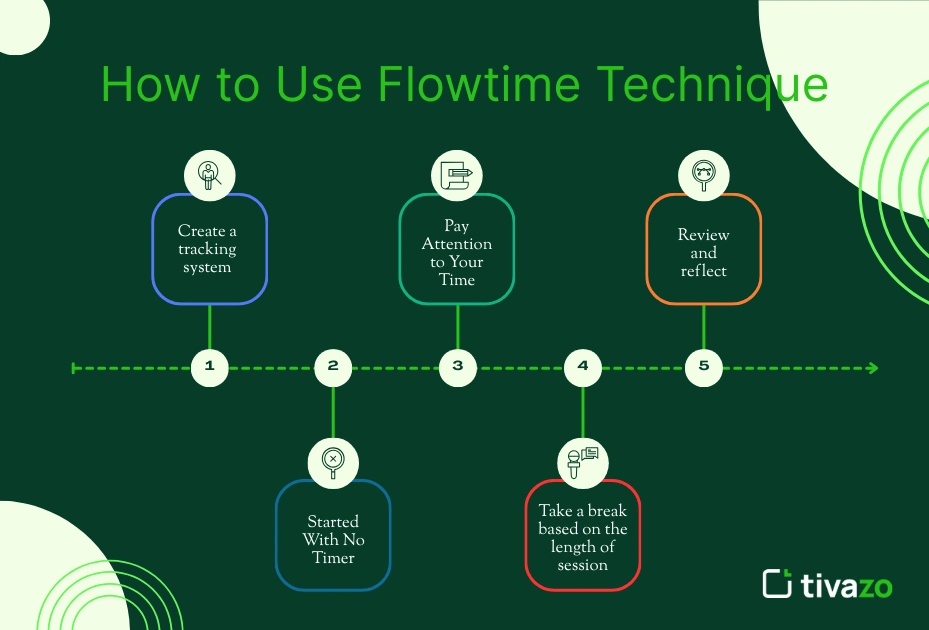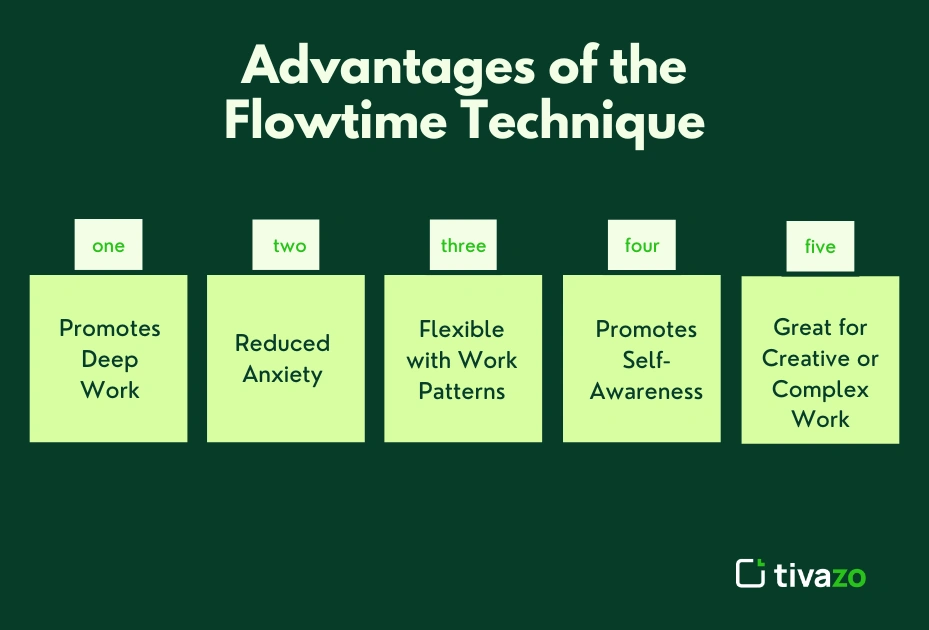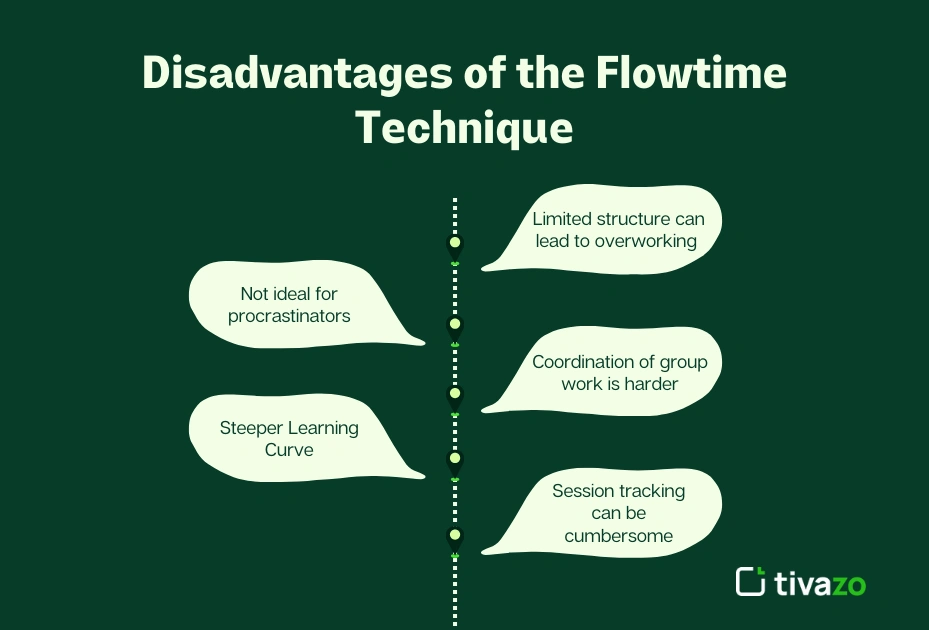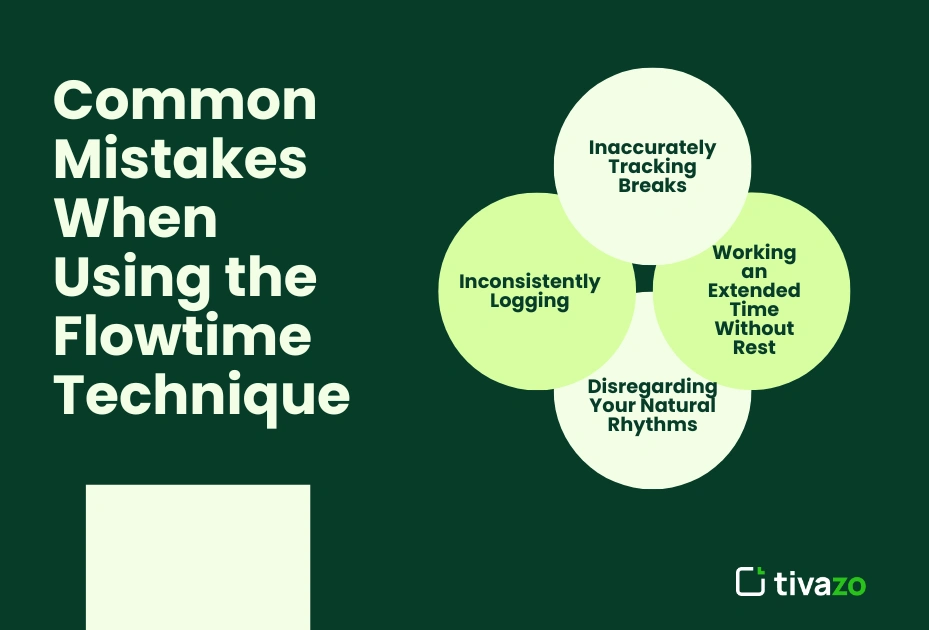What is the Flowtime technique, and why is it gaining popularity among professionals over Pomodoro?
If you’ve ever felt trapped by strict time blocks or annoyed by interruptions that take you out of your productive zone, you’re not by yourself; more and more professionals are beginning to adopt the Flowtime technique; a new and flexible way of being productive in the office contrary to the rigid structure of productivity techniques prior. The Flowtime technique is a modern alternative to traditional productivity methods that allow for flexibility by working with your focus, rather than against it.
But how does the Flowtime technique work? How do you use the Flowtime technique to remain focused and organized in your workday? What are the real benefits, or even disadvantages, and overall merits of Flowtime? And most importantly, what does it mean to be a better productivity tool than Pomodoro in the hybrid and remote-first businesses of 2025?
This blog helps you answer all these other questions so you can determine if the Flowtime technique best suits your workflow.
What is the Flowtime Technique?
The Flowtime Technique is a time management and productivity method that seeks to work with your focus cycles rather than against them. Zoe Read-Bivens created the Flowtime Technique as a more intuitive and flexible alternative to the strict Pomodoro Technique. The Flowtime Technique encourages deep work by allowing individuals to remove the rigidity of defined work/rest intervals.
Instead of working for 25 minutes or 50 minutes and resting for the same set period (as in Pomodoro), the Flowtime Technique encourages people to simply start working (or having the intention to work), log how long they are continually focused, and rest when their natural focus diminishes. Over time, you build a reference log of your focus period to learn about your productive times and patterns.
The Flowtime Technique emphasizes working with your own rhythm:
- Autonomy over your own working rhythm
- Less distraction
- Flow states (the ability to focus deeply)
- A style that can accommodate energy level.
Because the Flowtime Technique enables deep work, it is effective for knowledge workers, developers, editors, writers, creatives, and others who need significant periods of undistracted concentration.
How to Use Flowtime Technique

The Flowtime Technique is easy to use, but it does require some discipline and the willingness to track your work patterns. Here’s a simple guide to getting started.
1. Create a tracking system
You can use a super simple Excel or Google spreadsheet, or keep a physical journal, or utilize Notion or any kind of time tracking app. You will need to track these things in your system:
- Start time
- End time
- Task name or description
- Duration worked
- Duration of break
For example:
| Task | Start | End | Focus Duration | Break |
| Writing Blog | 10:00 | 11:10 | 70 mins | 10 mins |
| Email Cleanup | 11:20 | 11:50 | 30 mins | 5 mins |
2. Started With No Timer
Choose a task and start working. There is no timer to set, unlike Pomodoro. Allow yourself to just flow, and let your mind flow for as long as it seems natural. The Flowtime technique is an extension of the previous technique in that the goal is to remove external distractions.
3. Pay Attention to Your Time
Be mindful of your attention while you work. When you leak attention, whether after 25 minutes or 90, stop. Check the time, and note how long your session was.
4. Take a break based on the length of session
The Flowtime Technique offers dynamic rest (not rigid 5 or 10 min breaks). The Flowtime Technique uses dynamic rest:
- <25 minutes of work = 5 min break
- 25-50 minutes of work = 8-10 minute break
- 50-90 minutes of work = 15 minute break
Dynamic break times allow for mental recovery based on cognitive load.
5. Review and reflect
After a few sessions or at the end of the week, it is important to visit your log and look for trends:
- What time of day was the strength of focus greatest?
- What tasks depleted your energy fastest?
- Do you feel better/rested after your breaks?
You may find reflection beneficial in developing your work strategy. The Flowtime Technique is not just a time tool but a time-use awareness tool.
Ideal Use Cases for the Flowtime Technique
The ideal use case for the Flowtime Technique is work that engages focused attention, where creative problem-solving is essential. The flexible and non-timed aspect of the Flowtime Technique makes it a natural fit for the following types of work:
Creative Work (Writing, Design)
Authors and senior designers thrive in flow. The Flowtime Technique would allow you to really delve into your work, without being interrupted by the timer’s final call, giving you an expectedly higher creative outcome.
Development / Coding
Coding usually requires a high level of cognitive effort to manipulate complex logic, and often needed deep attention. The Flowtime Technique favors uninterrupted natural development timelines, leaving developers in their code for a generous period of time, as they engage in complex problem-solving.
Studying for Long Exams
Abundant research supports the flexible blocks of study periods assisting students in preparing for long-constrained exams such as the GRE, bar, and medical boards. Flexible study periods allow the learner to study naturally to the level of their attention, in a less stressed and productive manner.
Deep Strategy or Planning Sessions
Business leaders, marketers, and project managers strategize in long-opening periods of brainstorming, planning, and deciding, which require uninterrupted time to contemplate and be receptive to ideas. The Flowtime Technique allows for higher improvements in focused attention.
Remote and hybrid teams
Because we work as remote and hybrid teams, no two of our schedules are the same, nor are the environments we work in. When we work together as a truly flexible team who are providing systems to allow the team members to provide their productivity absent of a stand-alone timer is the Flowtime Technique.
Advantages of the Flowtime Technique

The Flowtime Technique has significantly many significant benefits. Here are some of the advantages:
1. Promotes Deep Work:
Without a timer counting down, you will have a much better chance of reaching a state of flow where you have mentally checked out and time fades as your productivity spikes.
2. Reduced Anxiety:
In contrast to the Pomodoro Technique where you’re constantly under the pressure of a timer counting down like a momentum race, the Flowtime Technique is a much more relaxed format. You will take breaks whenever your mind decides, not the buzzer.
3. Flexible with Work Patterns
People work differently; some can deep-focus for 2 hours and others for just 20. The Flowtime Technique allows people to work to their personal rhythms.
4. Promotes Self-Awareness
The log will become more than just your record, it will become your own reflection. You will know when, how, and why you work best.
5. Great for Creative or Complex Work
The Flowtime Technique suits a writing, coding, designing, or strategic planning job, and any other tasks when concentration is broken and output suffers.
Disadvantages of the Flowtime Technique

As is the case with any productivity method, the Flowtime Technique has its downsides. Let’s break them down:
1. Limited structure can lead to overworking
Without timers, some people will just work too long and drive themselves into the ground. You really have to pay attention to signs of fatigue.
2. Coordination of group work is harder
If work requires coordination with others, having an open time frame can be incompatible with a fixed time frame.
3. Session tracking can be cumbersome
Keeping track of sessions can feel like an additional task, although many apps make this easier than it used to be.
4. Not ideal for procrastinators
The flexibility within the Flowtime Technique can be a curse for those who procrastinate, as those types of people need some kind of external pressure to start.
5. Steeper Learning Curve
It does require some experimentation to find your flow. You will not discover the right flow patterns overnight.
Despite these challenges, the Flowtime Technique represents an alternative, modern and brain-friendly method to more rigid productivity systems.
Common Mistakes When Using the Flowtime Technique

The Flowtime Technique is versatile, but not infallible. There are a few pitfalls to avoid in order to get maximum utility from it:
1. Inaccurately Tracking Breaks
Since breaks are important to maintaining safety and energy from prolonged attention, which is a prerequisite to recovering attention, be sure to track breaks just like you would a “working” session.
2. Working an Extended Time Without Rest
While the goal of Flow is powerful, it is not sustainable. If you are working for more than 90 minutes without a break, you may be shooting yourself in the foot. You are probably destroying your productivity more than helping it if you are no longer able to be at your most productive work level.
3. Disregarding Your Natural Rhythms
Trying to force focus during your unproductive/low-energy hours does not help you. Use your logs to identify the time periods when you are best at being alert and focus on scheduling deep work periods in those time frames.
4. Inconsistently Logging
Inconsistent logging does not give you the full power of the entire method. The reduction of the entire process into data is the true power of the Flowtime Technique. The more consistently you use it, the more benefits you will get from the insights and productivity.
Flowtime Technique vs. Pomodoro Technique
Both the Flowtime Technique and Pomodoro Technique aim to improve focus and efficiency, but they take fundamentally different approaches. Let’s compare them side by side:
| Feature | Flowtime Technique | Pomodoro Technique |
| Work Duration | Flexible, based on natural focus | Fixed (usually 25 minutes) |
| Break Duration | Adaptive, based on session length | Fixed (usually 5 minutes) |
| Timer Required | No | Yes |
| Flow State Friendly | Yes | Limited |
| Ideal for Creative Tasks | Yes | Less effective |
| Learning Curve | Medium | Low |
| Suits Structured Teams | Less | More |
| Tracking Required | Yes (for best results) | Minimal |
| Anxiety or Pressure | Low | Can be high for some |
Which One Should You Use?
- If you are new to time management, or you need strict boundaries then choose the Pomodoro Time Management technique.
- If you are challenged by distractions in a deep focus mindset, and you want more control and less interruptions, then use the Flowtime Technique.
Some people have even used both methods combining the Pomodoro time management method for busywork and the Flowtime Technique for deep work. In 2025 productivity is all about flexibility, so your strategy must be all about you.
Conclusion
The Flowtime Technique is a more flexible form of productivity that encourages self-awareness, prolonged focus or deep work, and a flow state based on your own work style. Flowtime is not structured by specific timed time management systems; Flowtime expects the ebbs and flows of energy and focus, which will help to increase your ability to engage.
If you are either writing a book, coding an app, or performing a series of complex tasks, Flowtime assists you in sustaining an effort without being continually interrupted. If you have found rigid, traditional disciplinary methods unsatisfying, you can try this more mindful, personalized approach to awareness and executive function, and improve the way you choose to manage your time and attention in 2025 and beyond.



